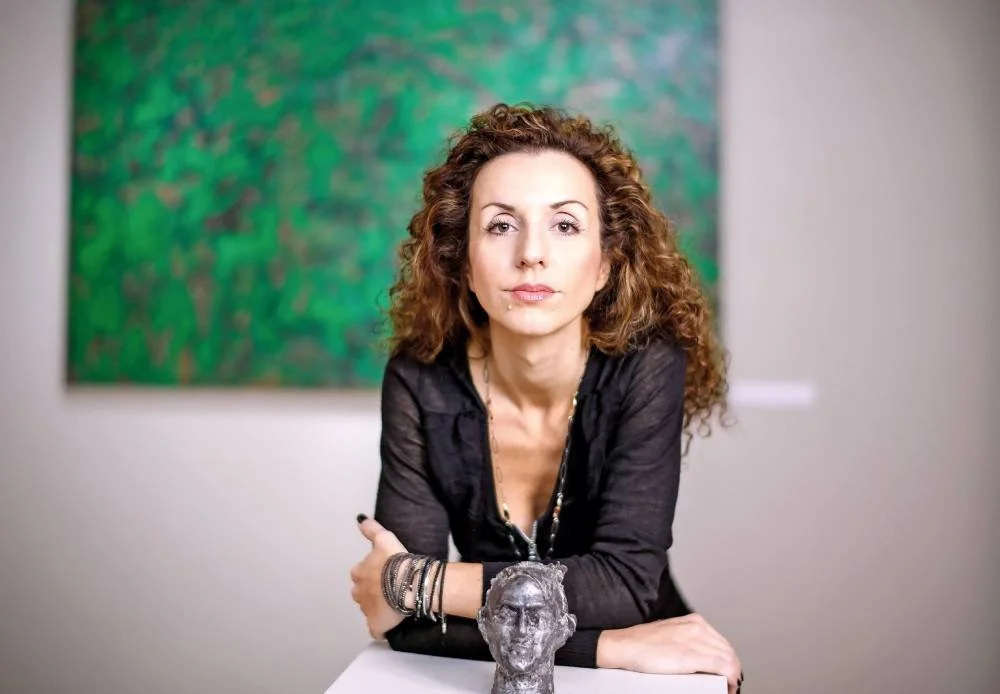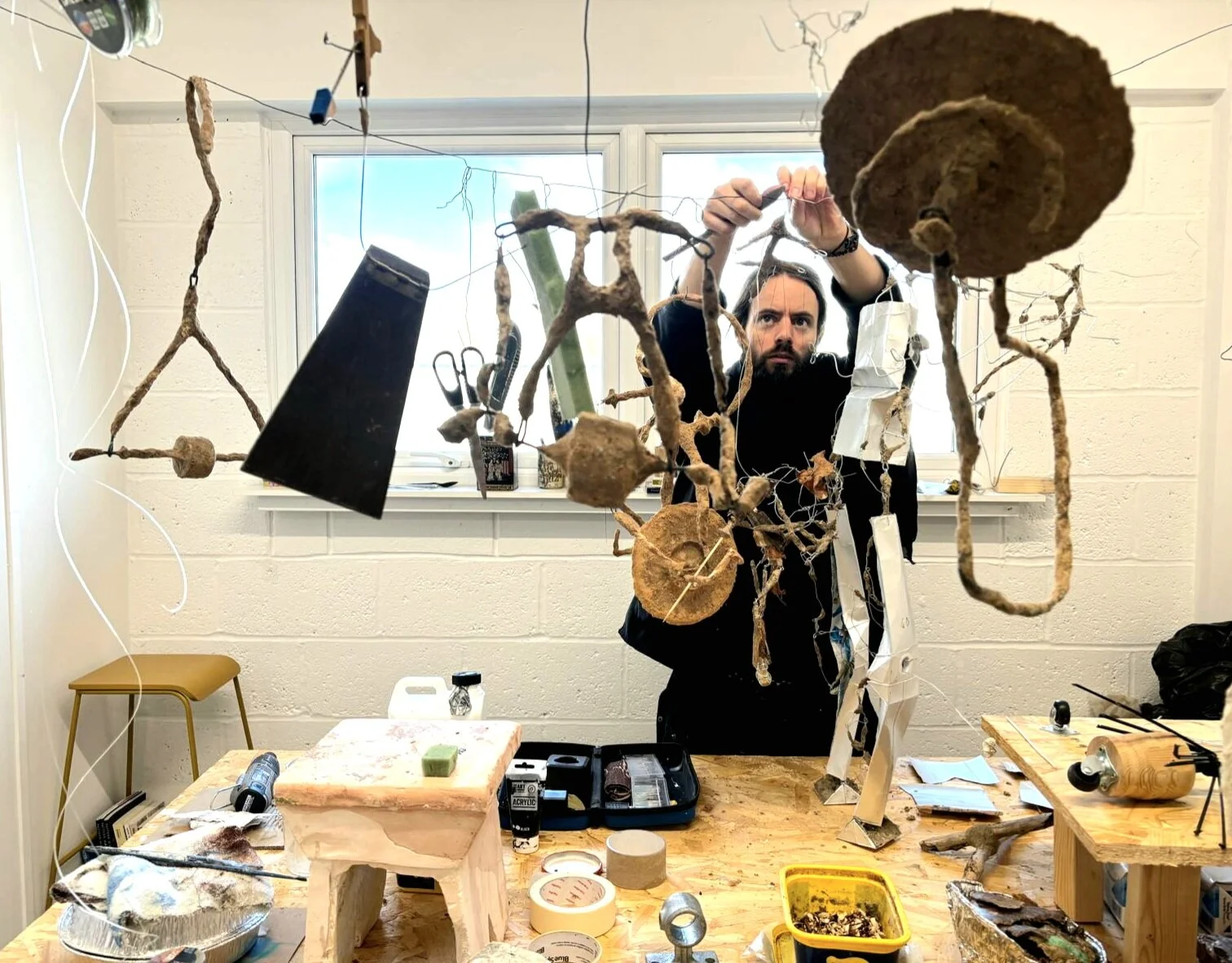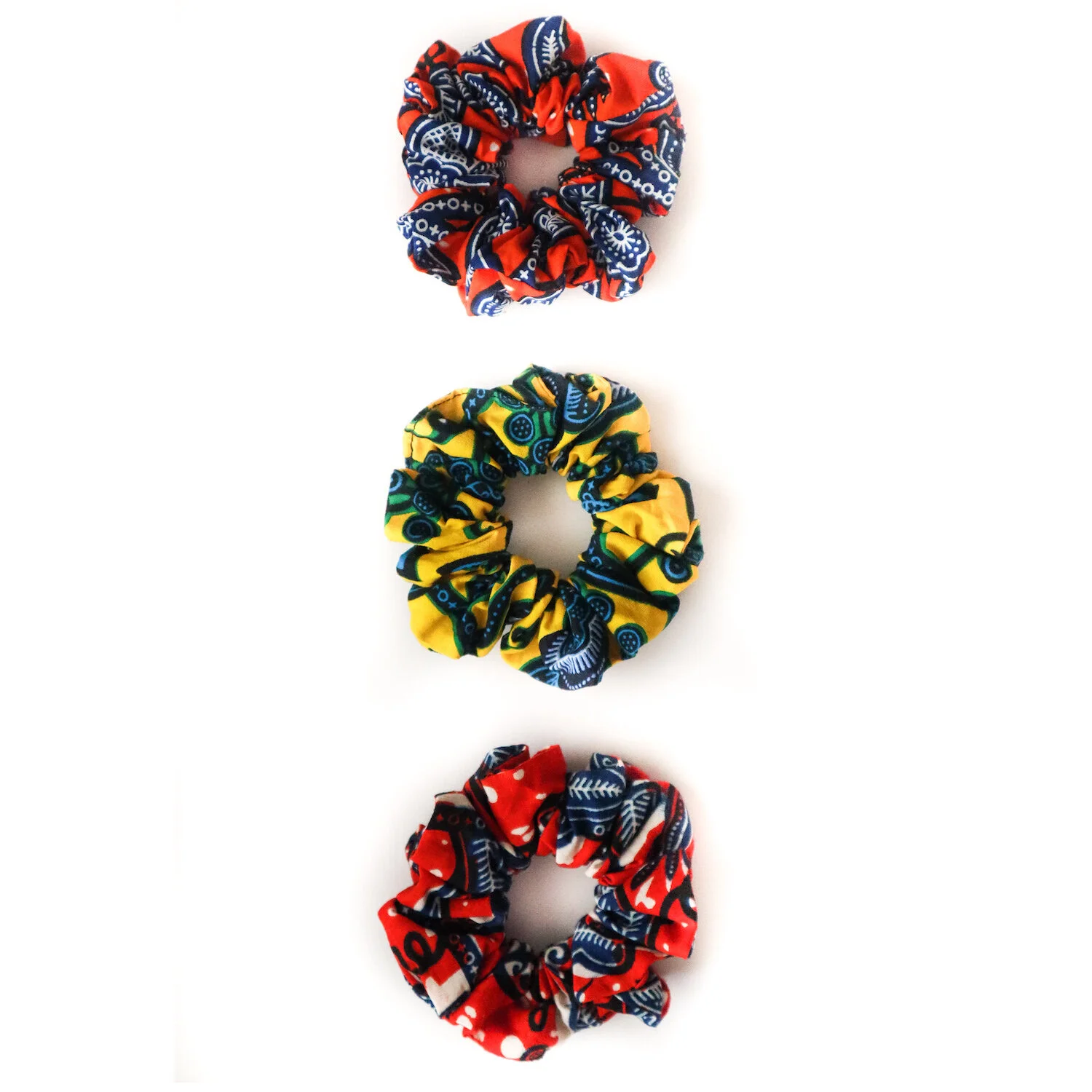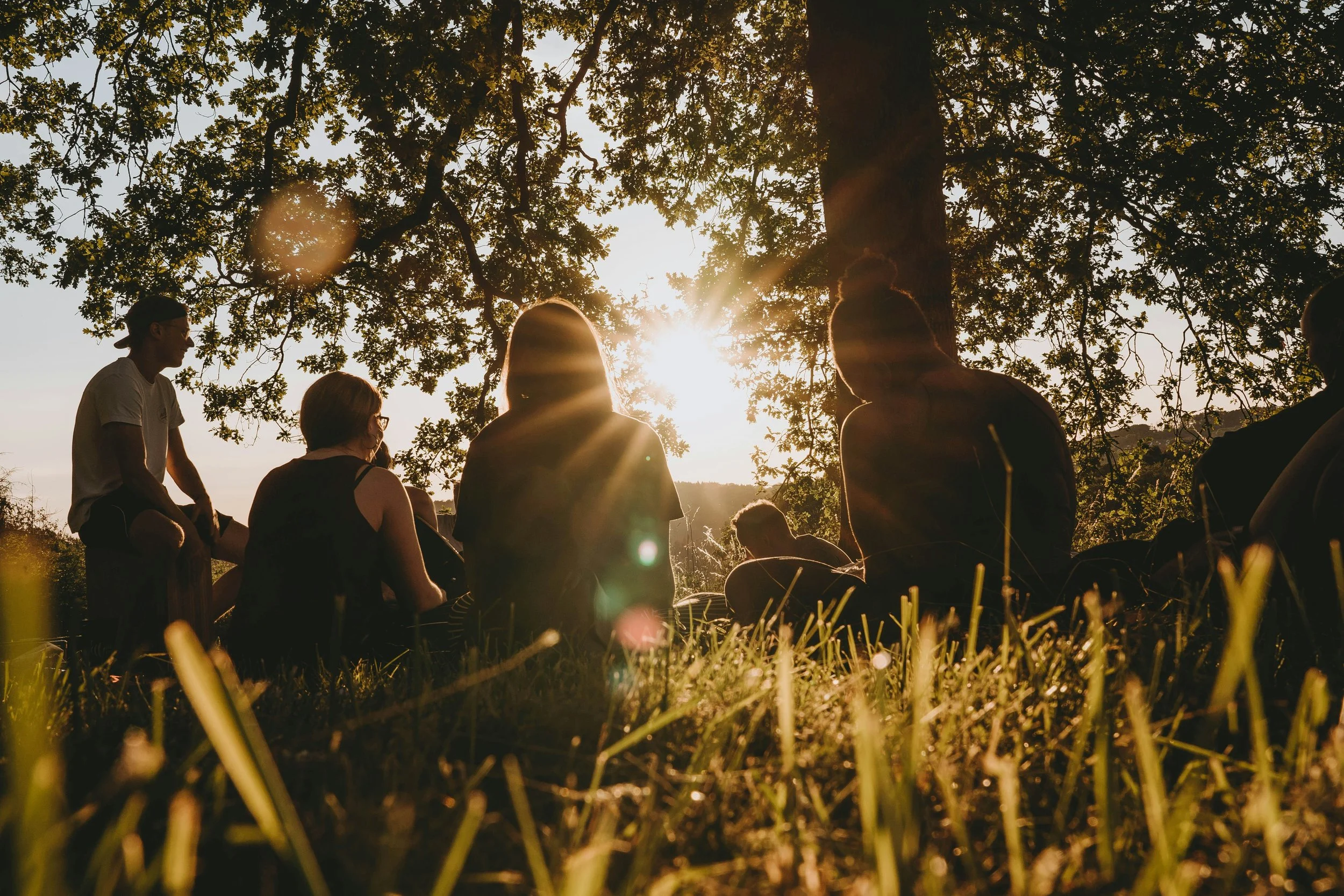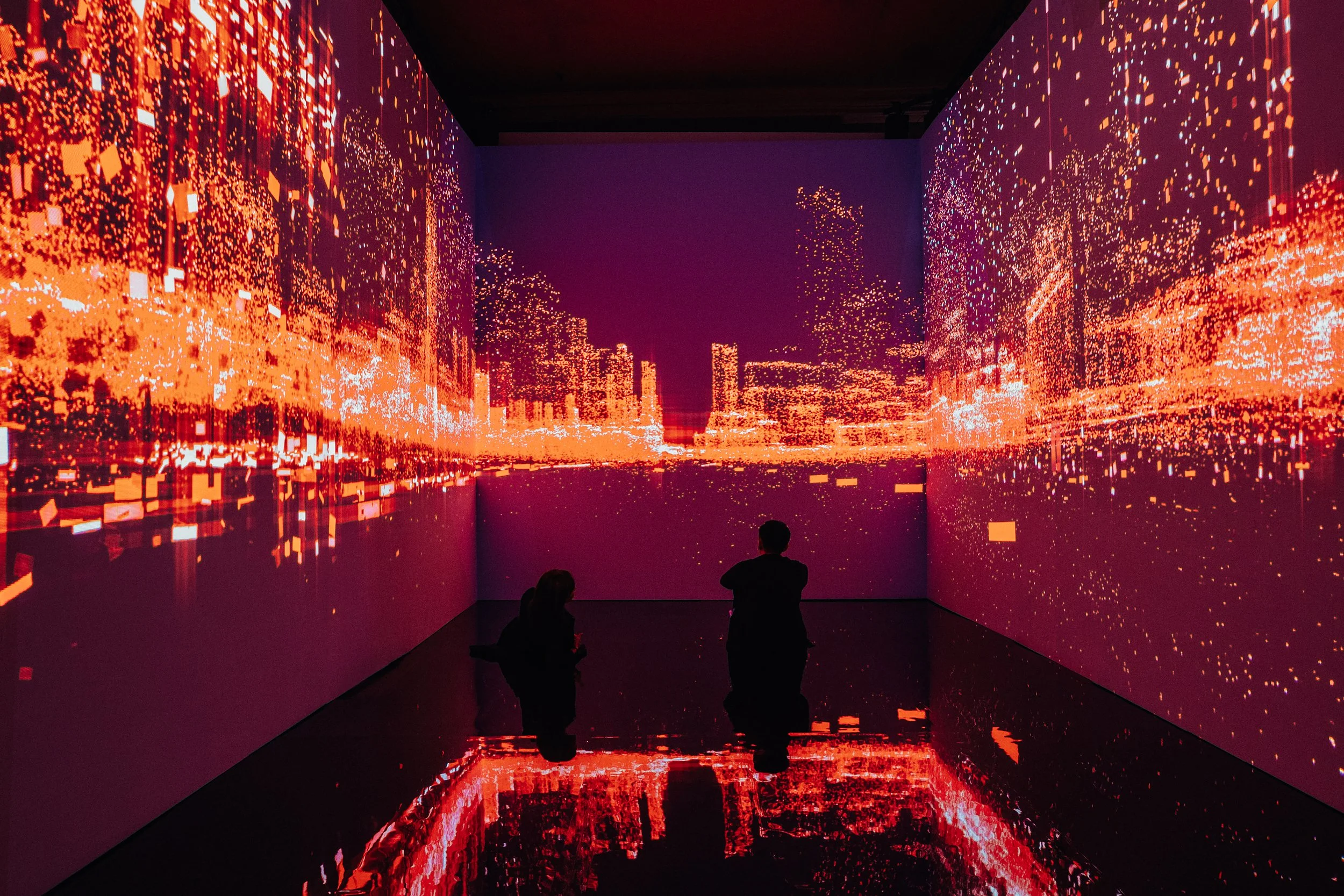In conversation with Hannah Martin
“Curating has been a way to bring together my passion for the arts with my love of research and theory.”
- Hannah Martin
Hannah Martin.
Hannah Martin is a queer, feminist artist and curator living in London. She has an MA in Gender, Media and Culture from Goldsmiths University, and since 2017 has been an organising member of the Devil’s Dyke Network, a poetry and arts collective based in Brighton amplifying queer voices and generating cultural political energies. She has exhibited at various venues including Doomed Gallery, London College of Communication, ONCA Gallery, Raven Row, The Royal Standard Liverpool, and VFDalston, and has worked at Mall Galleries, Studio Voltaire, and is currently a Curatorial Assistant at the Hayward.
What sparked your passion for the arts and how did it lead you to a career in curating?
I have always loved drawing, and initially studied Illustration and Visual Media, and while I still do draw, my creative practice is very much for myself at the moment, rather than being something I’m pursuing a career in. After graduating I joined a queer, feminist poetry and arts collective, The Devil’s Dyke Network, where I started curating events and exhibitions. I then ended up doing a Masters in Gender, Media and Culture where I was really drawn to affect theory and thinking about our emotional and embodied responses to the arts, and this love of research and knowledge building has always underpinned my own creative practice.
Professionally, I worked in a variety of positions for different galleries, from initially working front of house at the National Portrait Gallery, to working as a writer interviewing artists at Mall Galleries, then as a Programme Assistant at Studio Voltaire, before joining the Hayward as a Curatorial Assistant. But co-running The Devil’s Dyke Network was really where my curatorial practice began. Curating has been a way to bring together my passion for the arts with my love of research and theory.
In your opinion, what does it mean to be a curator in the contemporary art scene today?
I think the most important thing when curating, is focusing on the connection made between the audience and the art. Both valuing an artist’s intention, communicating the crux of what they are trying to say through their work, and thinking about diverse audiences and how those, particularly on the margins of society, will respond to a space and how we can make spaces more accessible. Interrogating identity and how that plays into the way people respond, being able to share knowledge, and being able to spark feelings of possibility are all crucial aspects of the way I think about curation. I want to break down the barriers that often render the arts as something seemingly inaccessible.
How would you define your curatorial process?
This is definitely something I’m still developing, and I’m continually learning from those around me whilst taking inspiration from exhibitions, talks and events, but also from daily life experiences and interactions. Some members of my collective, future vi and Claudia Treacher, once described curating as like gardening, which has really stuck with me. When curating an exhibition or a programme of events, you have to keep tending to it; to prune it, water it and treat it with love and care. Unexpected things will grow and take you in new directions, and things will constantly change with the seasons and will keep changing when people interact with and respond to them.
The Devil's Dyke Network, 2022, Photography by Alex Stoian.
Have any artists, writers, curators, or other creative thinkers influenced your curatorial practice?
Creatively I am extremely inspired by the riot grrrl movement and D.I.Y. approaches to creativity and art making, where expressing raw emotions takes precedence over technical excellence. The politics of vulnerability and the personal as political is something I think about a lot, and queer affect theory has been crucial to the way I analyse the world around me, which I think is inseparable from my curatorial practice.
Some key texts for me are Ulrika Dahl’s work on femmebodiment, Sara Ahmed’s analysis of the cultural politics of emotion, and Hannah McCann’s writing on queering femininity. I also love Ann Cvetkovich’s work where she analyses curatorial practices that work with queer archives, and how she looks at collective creativity as an antidote to the public feeling of depression which is brought about by the neoliberal state - I think everyone should read her book ‘Depression: A Public Feeling’!
Working at Studio Voltaire was definitely a career breakthrough moment for me and I’m really grateful to the curatorial team I worked with when I was there, and the people I’ve met through the Devils Dyke Network that have exhibited at and performed at our events, continue to inspire and influence me.
You were recently involved in curating the There Is Light Somewhere exhibition by Tavares Strachan at the Hayward Gallery. Can you share the story behind this exhibition's development?
Ralph Rugoff, the Director of the Hayward Gallery who has led the curation of There is Light Somewhere, first saw Tavares’ work at the Lyon Biennale in 2013. He was drawn to the ambitious and wide-ranging intelligence evident in Strachan’s work, which carries a critical social commentary, and voices urgent questions in a lyrical, poetic manner. They then worked together when Ralph curated the 2019 Venice Biennale, and not long after, plans began for an exhibition at the Hayward.
This exhibition will be the first mid-career survey for Strachan, who now has two decades worth of work to draw on. Working closely with one artist who has such a varied practice and body of work has been really fascinating. I only joined in September 2023, but the plans for the exhibition have evolved a lot even since then, as Ralph, Thomas Sutton (Assistant Curator), and I worked collaboratively with our technicians, the artist, and his studio at Isolated Labs.
What kind of experience are you hoping to create for visitors of the There Is Light Somewhere exhibition?
The starting point for a lot of Strachan’s work is his project ‘The Encyclopedia of Invisibility’, which will be displayed in a wall-to-wall installation. Strachan created his own encyclopaedia as ‘a home for lost stories’ with over 17,000 entries about people, creatures, places, objects and artworks that have been overlooked or neglected because of biases in the West’s creation of knowledge. The majority of the work in the exhibition then builds on figures from the encyclopaedia entries.
I hope it inspires people to do their own research into some of the figures featured and encourages visitors to interrogate Western knowledge building and to think more widely about whose voices have been lost to white, patriarchal and colonial histories, and why this history doesn’t account for them. As well as having themes and historical figures that I hope will spark curiosity, it’s also a really varied show with a lot of experimental immersive spaces, some of which are multi-sensory with smells, sounds and surprise elements that I hope will create a sense of wonder and excitement for visitors.
What do you find to be the biggest challenge in your role as a curator?
I was very used to working on a small scale in collective, community environments, so learning how to operate within a relatively large institutional framework is very new to me - the teams are great though and everyone is very passionate. I’ve also never worked on an exhibition with such a long lead time before, and there is so much more that goes into making an exhibition happen on such a large scale that I’d never truly considered!
Can you share any particularly meaningful or standout moments from your curatorial career?
I am still incredibly proud of all the work I’ve done with the Devil’s Dyke Network. The first time we got a bit of funding we put on a day long festival called Pleasure Gardens, with loads of workshops including Anti Raids training, a feminist self-defence class, an intergenerational discussion on queer oral histories, followed by an evening of music, poetry and art, which it was amazing to co-curate and run!
At Studio Voltaire, I worked with their artist in residency Beatrix Pang, and ZINE COOP, to put on a series of workshops and creative activities called Looking Out: Looking In focusing on indie publishing, whilst looking at how we care for ourselves both individually and in community spaces. Pang and I programmed a film screening, a talk on small-publishing and activism, a lino printing workshop, a workshop on how queer language functions and travels, and a zine fair, which brought so many new audiences to the gallery.
It’s also been really amazing working on my first large scale exhibition - Studio Voltaire has two small gallery spaces, whilst the Hayward is huge in comparison, so seeing the install take place for There is Light Somewhere has been really exciting!
Which three emerging artists would you recommend our readers keep an eye on?
I just got to work with Sola Olulode on the new banner opposite the Hayward Gallery. She’s a British-Nigerian artist who takes inspiration from Yoruba Adire textiles, and her work focuses on the joyful and intimate moments of queer romance.
I’m also currently obsessed with Omer Mosseri’s drawings which combine surreal and mystical elements with immediate emotion, and Tara Booth is one of my favourite unconventional comic artists. She creates incredibly honest work on difficult topics surrounding mental health, but somehow manages to make them really funny. Visually I love her textured use of paint and her use of colour and patterns.
Studio Voltaire, Good Things A Video History of Rectory Gardens, 2023, Photography Zoe Maxwell.
What advice would you give to a young person looking to break into the art industry?
Unfortunately, I think so much of it is about perseverance and being in the right place at the right time. I applied for hundreds of jobs in the arts before I started working at Studio Voltaire (often whilst it was quiet from behind the ticket desk at the galleries and museums I worked front of house at). I applied for my job at the Hayward after 9 months at Studio Voltaire, thinking I definitely wouldn’t get it. I’ve never studied curating or art history and it’s such a competitive industry, but this is proof that you don’t need to follow a conventional path! As long as you can show that you have experience, even if it’s on a very small grassroots or voluntary level, and your passion shines through, I think that’s what is most important!
I would also recommend going to as many exhibitions and arts events as you can - meeting artists, writers, curators and academics and talking to them about their work has taught me so much about the industry, and you never know who you might come across and the opportunities they might be able to introduce you to.
Are there any exciting upcoming projects you'd like to talk about?
I am going to be working on Linder’s retrospective exhibition, which will open at the Hayward in February next year. I love her subversive photo montages and collages, and I think her band Ludus was so cool! The feminist punk ethos that underpins her practice has really inspired me, and I feel really lucky that I will be able to work on this and gain an incredibly deep insight into her body of work.
Who is Hannah Martin outside the ‘office’?
Obviously, I try to spend my free time going to exhibitions, and I go to life drawing every few weeks to keep myself creative. I also love music, drag shows and poetry. Recently I’ve been writing a lot more, and this year I’ve started performing my own poetry which is scary but it’s so nice to have people respond positively to the very personal work I’m sharing. I also have an incredibly in-depth food map full of TikTok recommendations that I’m slowly working my way through!
The [Quick] #FLODown:
Best life advice?
Though I am making a living through the arts, I love this quote from Keith Haring: I am interested in art as a means of living a life; not as a means of making a living.
Last song you listened to?
Midnight Sun by Nilüfer Yanya.
Last book you read?
Sambac Beneath Unlikely Skies by Hema Hayek which is a beautifully poignant collection of essays about growing up in Gaza, and nostalgic reflections littered with joy and pain.
Can't live without...?
Meaningful connections, cats and chocolate.
What should the art world be more of and less of?
More genuine focus on artists from varied lived experiences, more open discussions, and more responsive change to criticisms. Less elitism and reproduction of systematic structures that harm those who have less privilege in society.
Hello, World!












